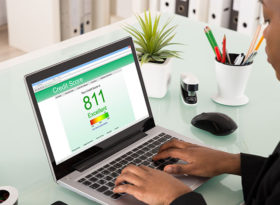 Housing
Housing
4 Steps to Being Less Financially Stressed
According to Financial Counselling Australia, about 13% of Australians (nearly three million people) live in households of high financial stress. That is a lot of people worrying about money. We don’t want you to be one of them, so today, we bring you some simple steps to being less financially stressed.
Step 1 – Get a clear picture of your financial health
Gather together all financial documentation you have and be prepared to sign into your online accounts. Start out by simply writing down on paper the total balances of each account (or, if you prefer, create a spreadsheet). You should have two main categories at the top of your list or worksheet: Own and Owe. The idea with this step is to give yourself an overview, not get into specifics. Write in the total for the following items in the appropriate category.
OWN
- Car
- Cash savings
- Home
- Motorbike
- Stock shares
- Superannuation
OWE
- Car loan
- Credit cards
- Mortgage
- Motorbike loan
- Student loan
Note: Be sure to delete what’s not applicable and add any additional items you have that aren’t listed here.
Step 2 – Create a spending plan
Keep the information from step one close at hand; continue the process by creating a spending plan. In addition to those earlier figures, you will need the total of your income from all sources. You will also need to know what your monthly expenditures are. You can find that out in two ways: listing all the line items from your credit card statements, bank statements, and/or receipts; or you can closely track everything you spend going forward. The main point is to get a realistic estimate for every spending category — such as groceries, eating out, petrol, etc. — for a typical month.
Step 3 – Make the cuts
When it’s time to look at the figures, the first question you need to ask is, “Am I spending more than I earn?” and if the answer is yes, it is vital for you to find ways to cut your expenditures. You should also consider how much you are saving. Everyone needs to have a cushion or emergency account for unexpected expenses like home repairs or job loss. If you don’t have one, even more cutbacks may be required.
Some areas to “painlessly” reduce your expenses include:
- Beauty treatments
- Eating out
- Gifts
- Holidays
- Parties
- Subscriptions (Magazines and App Stores)
As you review your spending records, ask yourself probing questions such as:
- Am I spending too much in bank fees?
- Am I spending too much on petrol when I could combine errands into fewer trips?
- Could I use home brands instead of buying some pricier groceries?
You’ll be surprised at how much making little changes like these can add up.
Step 4 – If you need help, reach out
Sometimes, the stress of dealing with financial problems can become so overwhelming that it affects your well-being or even your health. If you are in financial difficulty and constantly feel the strain, you may wish to see a financial counsellor. Financial counsellors provide information, support, and advocacy about matters related to personal finances. They are based in community agencies and are typically funded by State Governments or Federal Government. Their services are free, independent and confidential. Financial counsellors can help you prioritise your debts, develop a spending plan, and refer you to other agencies that may be able to help. You can find a qualified counsellor through the Financial Counselling Australia website.
We can help you cope with money worries, such as unexpected medical expenses, by providing a short-term loan. You can apply online and receive the funds in your bank account within 24h.




